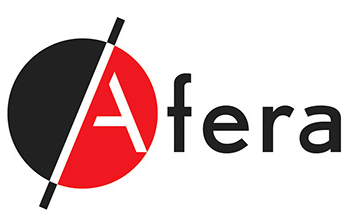
Structural bonding films that may replace liquid adhesives in some applications
 Afera’s last Annual Conference offered up presentations on 2 completely different technologies for structural bonding tapes, which moderator Melanie Lack, business manager of tapes and labels at H.B. Fuller, said we were likely to “see replacing some liquid adhesives in the marketplace in the future.” One such presentation was delivered by Annette Kelsch on structural bonding films (SBFs), which are very effectively in automotive (electronics, interiors and body construction), mobile communications, sports equipment and technical textile application fields.
Afera’s last Annual Conference offered up presentations on 2 completely different technologies for structural bonding tapes, which moderator Melanie Lack, business manager of tapes and labels at H.B. Fuller, said we were likely to “see replacing some liquid adhesives in the marketplace in the future.” One such presentation was delivered by Annette Kelsch on structural bonding films (SBFs), which are very effectively in automotive (electronics, interiors and body construction), mobile communications, sports equipment and technical textile application fields.
SBFs are made from 3 different materials which meet the market demands of bonding: They adhere according to the ever tougher requirements of bonding solutions. They perform like a structural adhesive, and they also allow for quick processing, fully automated and easy application, and for bonding a multi-material mix with small tolerances.
Multifunctionality and reduced production costs have not yet been achieved however: “The products are not inexpensive,” said Ms. Kelsch, who is R&D team leader for reactive adhesives at Lohmann GmbH & Co. KG, “but if an entire process is transformed, you should be able to realise economies in production.”
The limitations of pressure sensitive adhesive (PSA) tapes
“Our core business is to produce single- and double-sided PSAs, and even though they are very attractive in many regards, they do have a few limitations,” Ms. Kelsch explained. They do not have the best thermal resistance, for example, but depending on the application or certain temperatures, heat stability is mandatory. They also have lower environmental and chemical resistance, as well as low moisture and heat resistance.
Lastly, PSAs are limited in the compensation of static and dynamic forces. Industrial semi-structural and structural bonding have lap shear strengths of 5-10 MPa and 10-25 MPa, respectively, while PSAs compare at 1-1.5 MPa. The basis of structural adhesive bonding is a chemical-reacting polymer, with the curing mechanism carried out through heat, a hardening and resin component mix, UV radiation or moisture.
The powerful alternative to conventional bonding solutions
Combining the worlds of 1) PSAs, with their readiness to bond, their dimensional stability, pre-fixation, easy processing and wide bonding spectrum, and 2) structural adhesives, with their high force absorption, durability and heat resistance, we achieve a new bonding system: structural bonding films.
SBFs are made in 3 varieties: 1) polyurethane-based (PU) systems which cure in seconds at low temperature and are highly elastic, 2) cyanoacrylate-based (CA) adhesive tapes which allow for room-temperature curing, a high initial tack for easy and safe application, and use with  temperature-sensitive materials, and 3) epoxy-based (EP) adhesive systems with high stability and strength and the added advantage of good repositioning.
temperature-sensitive materials, and 3) epoxy-based (EP) adhesive systems with high stability and strength and the added advantage of good repositioning.
The PUs are quick, very flexible and suitable for bonding with plastics and textiles (e.g. aramid composites). They exhibit the best punchability and have the best storage parameters at 5-35˚C.
The CAs cure at the lowest (room) temperature, do not need high pressure, have the highest tack and are suitable for elastomeric materials.
The EP-based systems are really strong (high chemical and temperature resistance), highly stable and work well with metals and glass. They also show excellent punchability.
Latently reactive bonding films
On an industrial scale, all of these latently reactive bonding films can be produced using standard roll-to-roll wet coating technology. This means that they directly coat onto the release liner and obtain uniform layer thickness. Many variations of thickness are possible by using a carrier and modifying formulations. After coating, the result is a transfer film with reactive potential, either tacky or non-tacky, as a roll or die-cut.
In the second stage, either a pre-bonding-like PSA or a sort of thermoplastic film, depending on the tackiness, can be pre-applied to the substrate. In the last stage, heat and pressure are applied to start the cross-linking, resulting in irreversible bonding.
Download the complete slide presentation of Annette Kelsch (access code Athens2018)
Go to overview of articles on Athens Conference topics
Learn more about Afera membership

